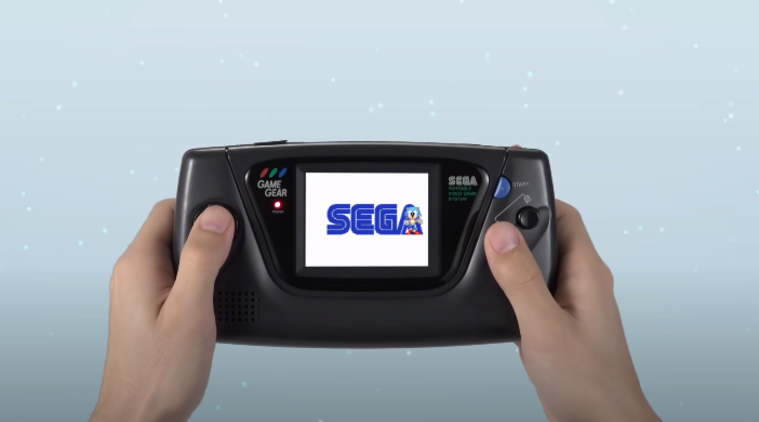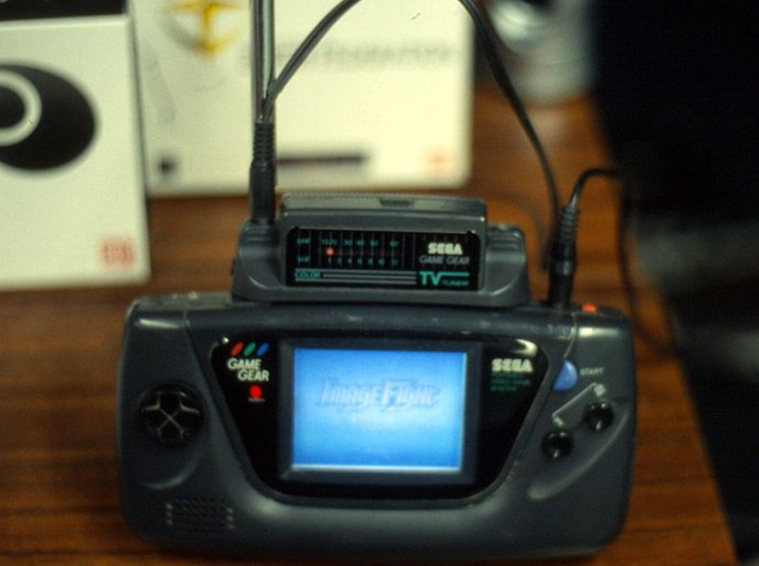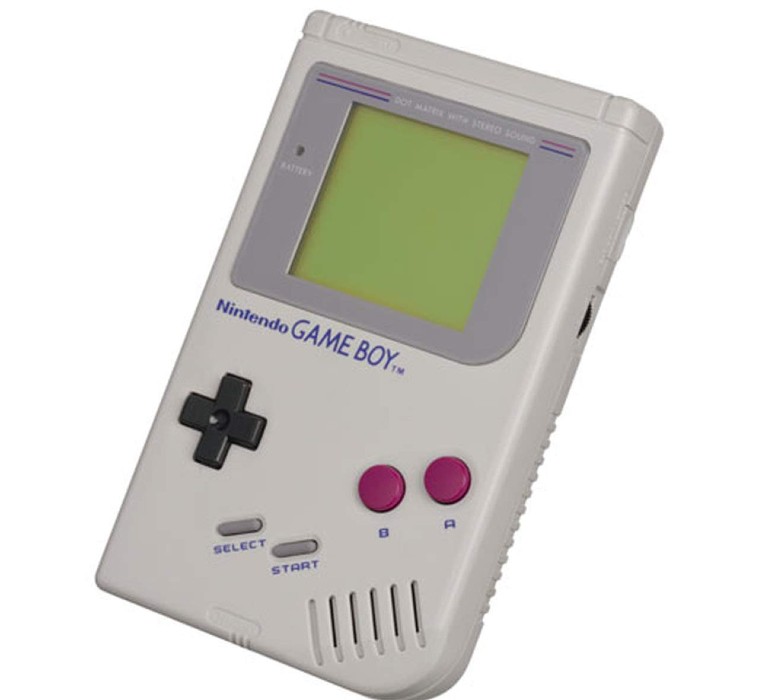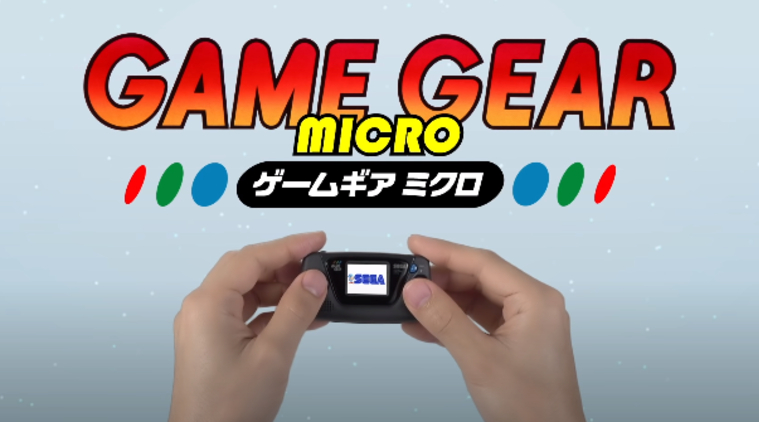 History of handheld consoles: Sega’s Game Gear was pitched against Nintendo’s Game Boy console. (Screenshot: Official Sega Game Gear Micro video)
History of handheld consoles: Sega’s Game Gear was pitched against Nintendo’s Game Boy console. (Screenshot: Official Sega Game Gear Micro video)
Out of nowhere, Sega, popular Japanese video game company of the late-80s and early 90s, Wednesday announced that it will be releasing the Game Gear Micro, a miniature version of its classic handheld Game Gear console. The Game Gear Micro will cost ¥4,980 (around $45), and start shipping on October 6 in Japan.
The announcement of Sega releasing the Game Gear Micro for its 60th anniversary brings back fond memories of the original Game Gear handheld console. Those who grew up in the late 80s or early 90s remember the Game Gear, a handheld console that rivaled Nintendo’s Game Boy. Although the handheld console was largely eclipsed by the popularity of the Game Boy, Sega’s Game Gear still has a huge fan following to this date
With the launch of the Sega Game Gear Micro, the spotlight is once again on the 1990’s Game Gear. Since the Sega Game Gear is still largely unknown to the current-generation of gamers, we thought of sharing some surprising facts about one of the most underrated pocket consoles in the history of video games.
Here are nine things you didn’t know about the Sega Game Gear.
#Development of Game Gear began in 1989 under the codename “Project Mercury.” Sega had a history of naming its devices after planets during the development process. For example, the Sega Genesis was internally called ‘Project Venus’ and the 32X ‘Project Mars.’
 The Game Gear also supported a TV Tuner accessory. (Image credit: Rama/Wikimedia Commons)
The Game Gear also supported a TV Tuner accessory. (Image credit: Rama/Wikimedia Commons)
#Primarily aimed at Nintendo’s Game Boy, one of the greatest handheld consoles ever made, Sega introduced the Game Gear in Japan on October 6, 1990. The US and Europe got the console in 1991. The Game Gear retailed for $150. The system had a decent shelf life and the console was available until 1997.
#The Game Gear was basically a Sega Master System in a handheld form. Essentially, the Game Gear was based on the 8-bit Sega Master System technology. It’s said that Sega wanted to bring the console to the market sooner and hence the company decided to make a portable version of the Master System. Given the Game Gear had the same internals as the Master System, the handheld console got a lot of ports of some popular Master System games.
#Not many know that the Game Gear was technologically more advanced than its closest rival — Nintendo’s Game Boy. For example, the handheld console came with a 3.2-inch full-color backlit display and a palette of 4096 colours. In comparison, the Game Boy used a dot matrix display.
 Sega’s Game Gear was primarily aimed at Nintendo’s Game Boy, one of the best-selling handheld game console of all time. (Image credit: Amazon.com)
Sega’s Game Gear was primarily aimed at Nintendo’s Game Boy, one of the best-selling handheld game console of all time. (Image credit: Amazon.com)
#The Game Gear was well designed and wasn’t very heavy. The handheld machine had two action buttons and a D-pad. The Game Gear also supported stereo sound but only when using a pair of headphones. Otherwise, the console only had a single speaker for audio. The Game Gear also supported multiplayer gaming, just like the Game Boy.
#Even though the Game Gear was primarily a handheld console, Sega envisioned the device as a multimedia device. With the help of a TV Tuner accessory, the Game Gear could be turned into a TV thanks to a full-colour screen. The handheld console also came with an accessory called Super Wide Gear, which clips on to the bottom of the system and magnifies the display for easy viewing.
Remembering Steve Jobs’ NeXT, a computer company he founded in 1985
#When you look at the history of handheld consoles, Sega’s Game Gear is regarded as a failed console. Well..that is not the case. In fact, the Game Gear went on to sell over 11 million units worldwide, which by any parameter is not a failure. Sure, the Gear Gear wasn’t as popular as the original Game Boy (it sold roughly 60 million units in its lifetime) but calling it a flop is also not justified.
 Sega is making a teeny tiny Game Gear Micro console. (Screenshot: Official Sega Game Gear Micro video)
Sega is making a teeny tiny Game Gear Micro console. (Screenshot: Official Sega Game Gear Micro video)
#That’s not to say the Game Gear was a perfect console. In fact, Sega’s Game Gear had its share of problems, which obviously dented its popularity. One of the most annoying issues with the Game Gear was its battery life. The system demanded 6 AA batteries which will last for roughly two hours. In comparison, the Game Boy lasted for 30 hours from just four AA batteries.
#When the Game Gear was launched, most games consisted of Master System ports. such as Castle Of Illusion, Columns, Super Monaco GP, among others. As the popularity of the Game Gear grew in Europe and Japan, the console did get some stellar exclusive titles like Shining Force: The Sword of Hajya and The GG Shinobi. A total of 363 games for the system were released for the handheld console.